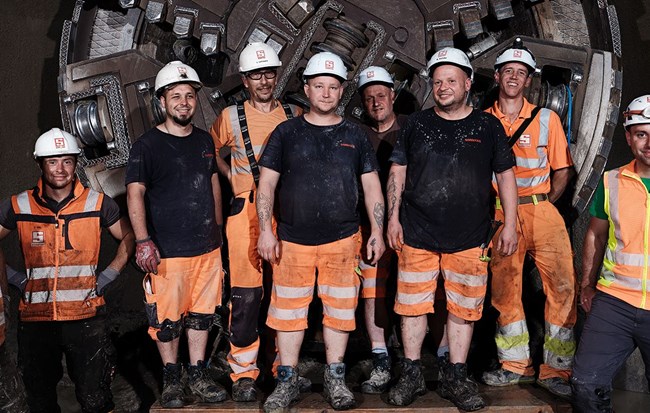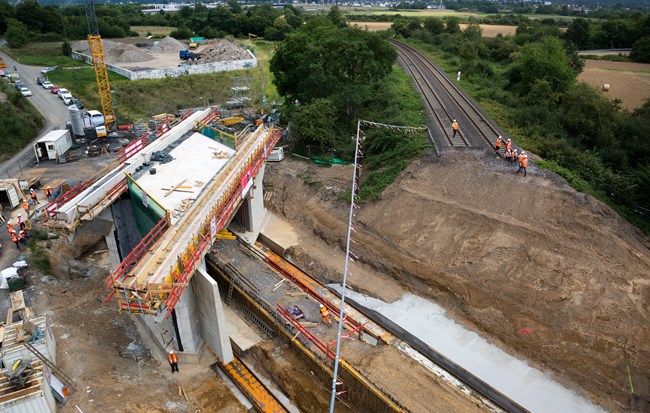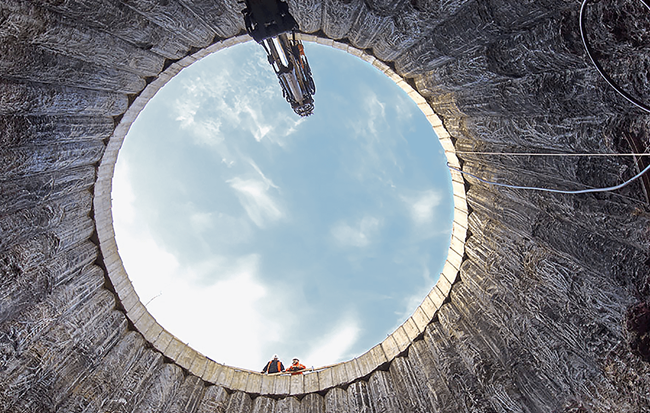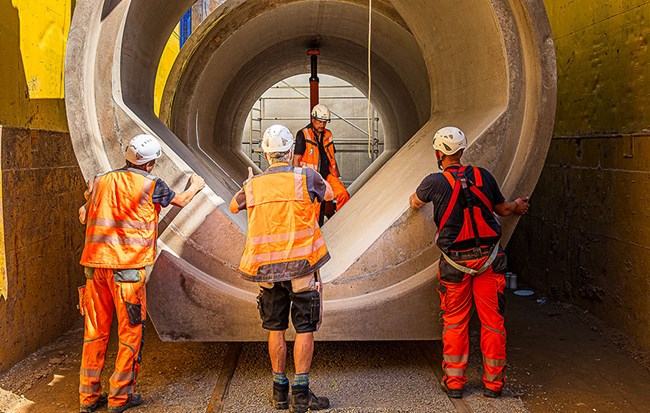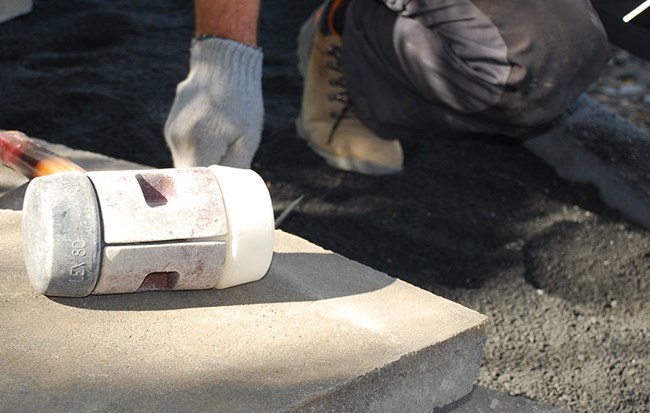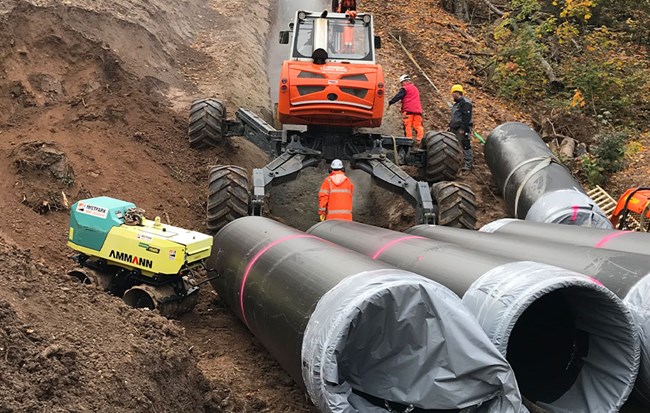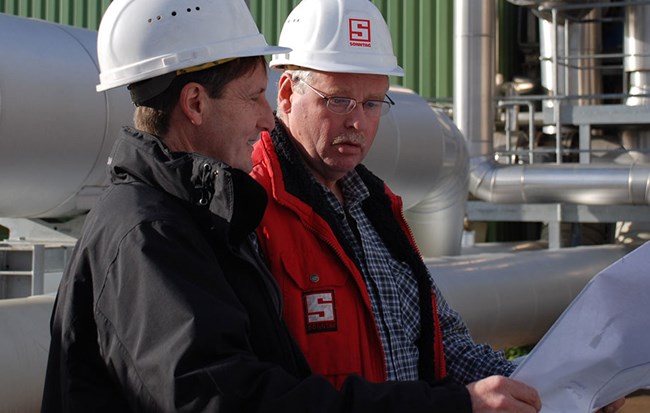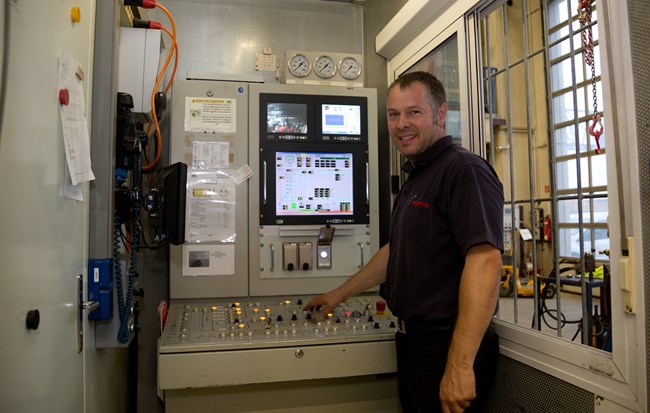Sheeting technology
Our vibration piling is currently equipped exclusively with resonance-free start-up and run-out so that it can also be used in oscillation-sensitive building grounds and constructions without any damage. If necessary, stress release drilling is conducted with a CFA (continuous flight auger). Depending on the soil type and requirement, the sheet groove is pressed during extraction of the sheet piles in order to prevent retroactive settlement.
With round or elliptical building pits, the shotcrete method of construction has stood the test. Considerable advantages of this method include the absolute vibration and settlement-free positioning of the sheeting, as well as the possibility of omitting or including supply lines or other objects which protrude into the pit lining.
We have used linear sheeting since 1996, primarily in municipal sewer construction at depths of up to approx. 6 m. The difference from traditional slide bar sheeting is that the steel sheeting plates or piling chambers can be lowered almost without constraint. This means the otherwise inevitable settlement near the building pits is can be ruled out. With underground construction, the sheeting can be used as an outer formwork, dispensing of an external work space.
We manufacture pumping stations and shaft and chamber constructions economically, often using the caisson method of construction. The structural shells – formed and concreted either on-site or put together in finished parts – are initially manufactured without bottom slabs. In order to enable better gliding, a cutting edge is shaped on the end of the caisson. Then we lift the bottom plate out – under water, if necessary, which allows the pumping station, the shaft, or the chamber construction to be lowered into the building ground.
After reaching the target depth the bottom plate is concreted. If the construction is in groundwater, another concrete seal for the groundwater must be inserted underwater beforehand.

